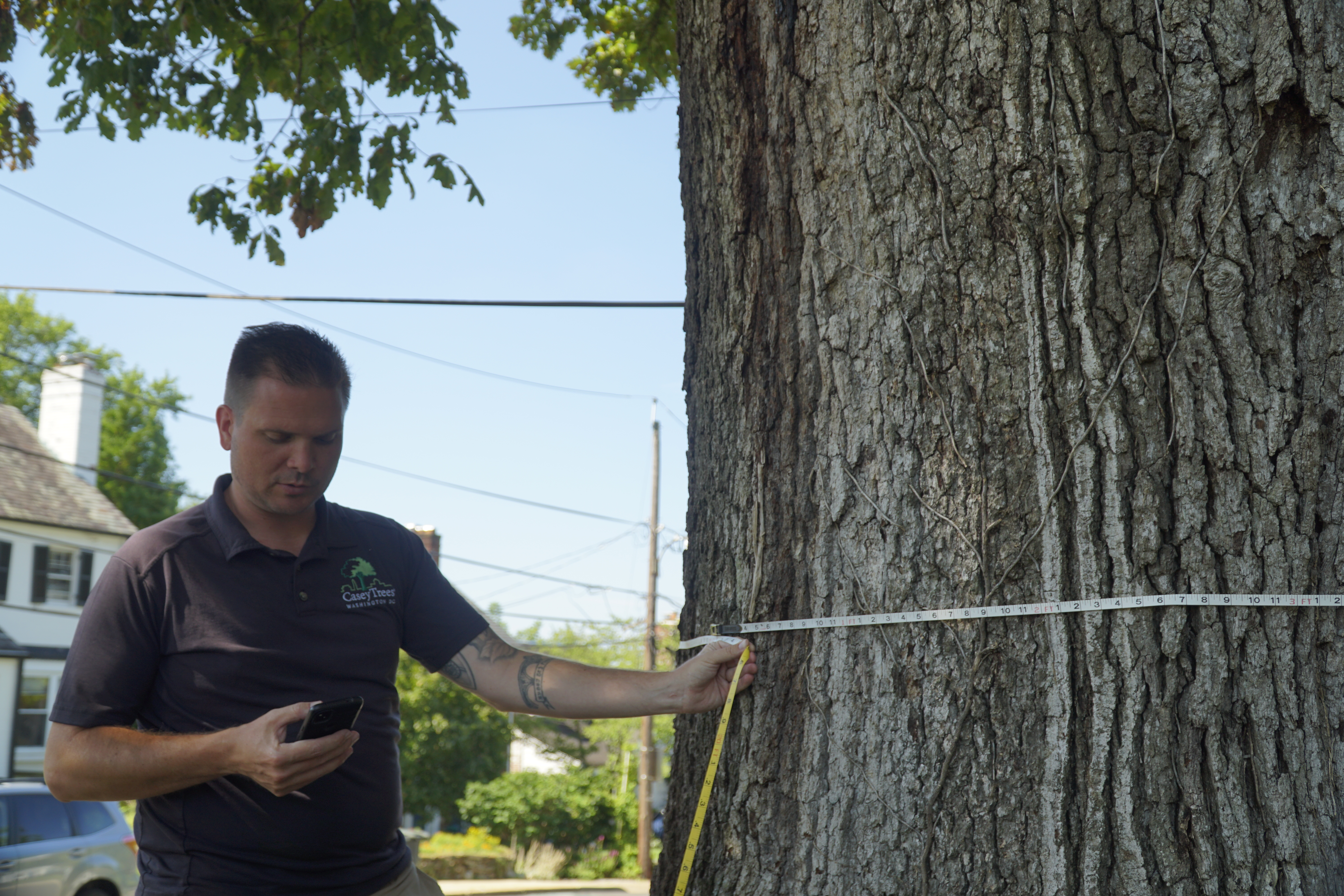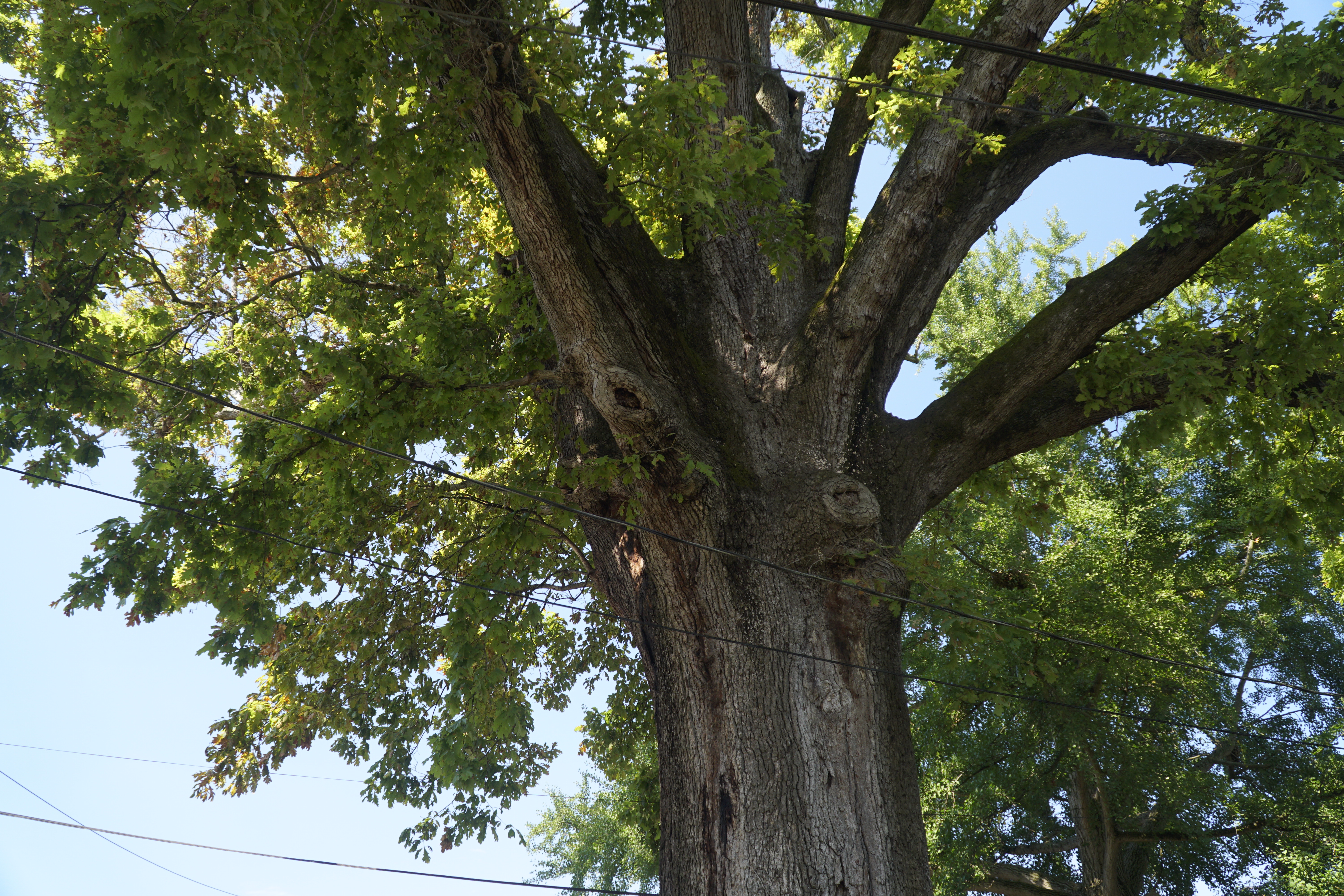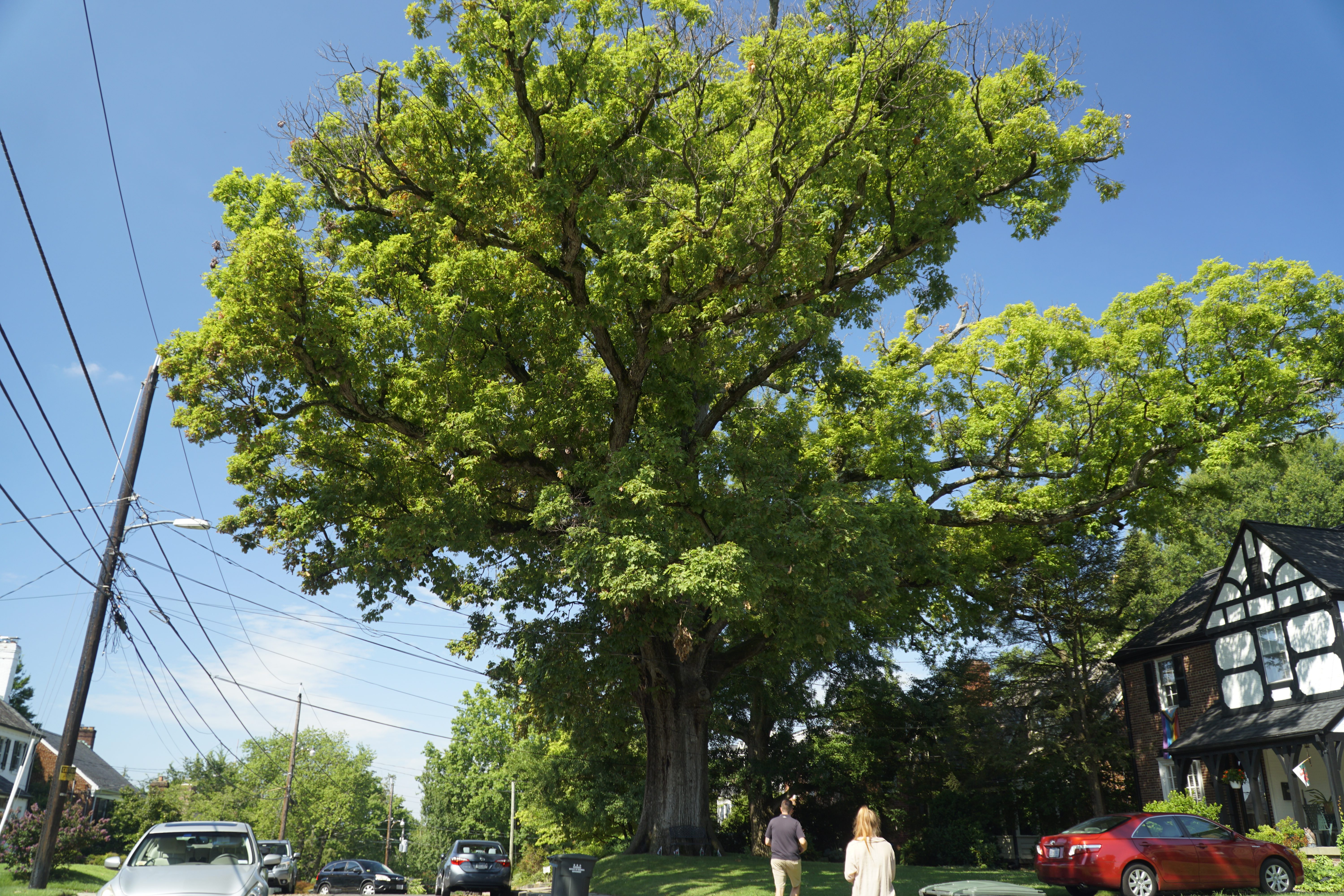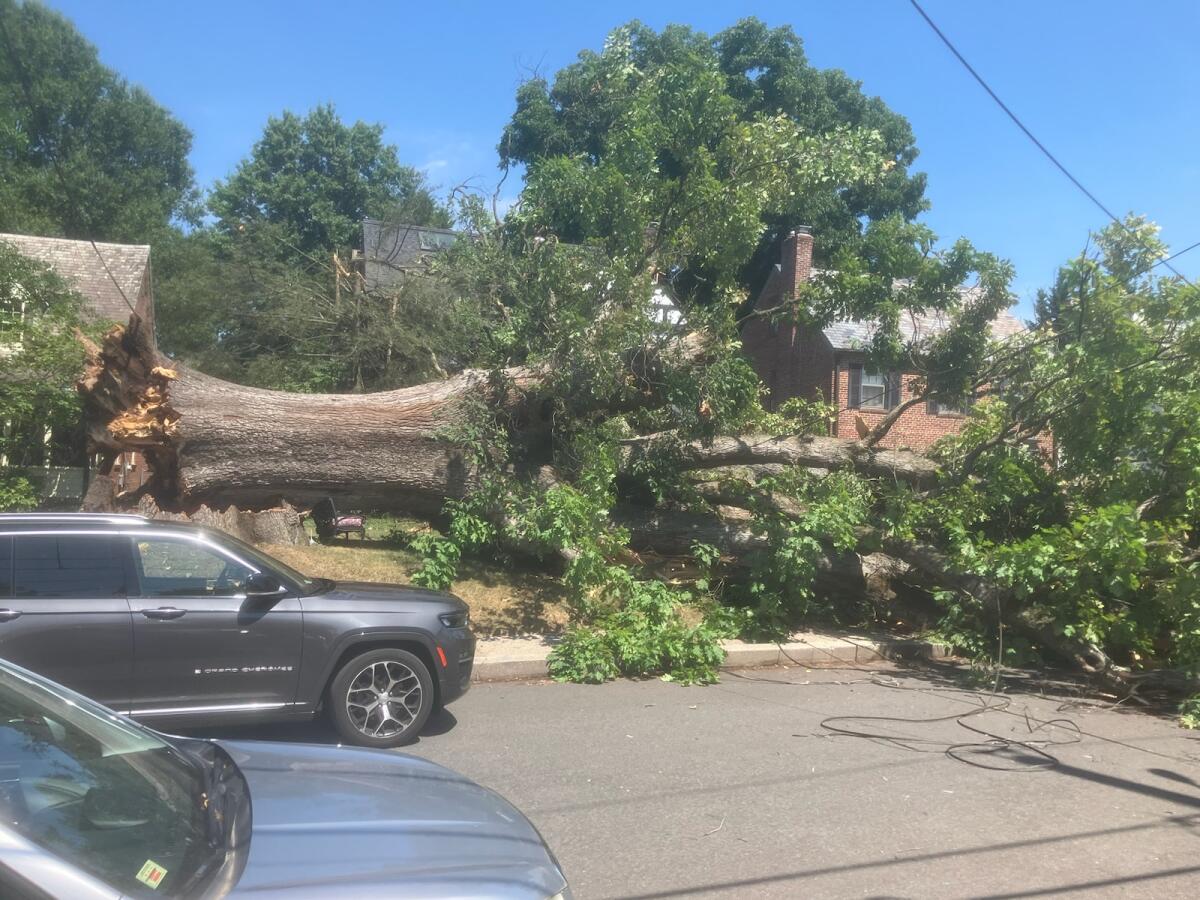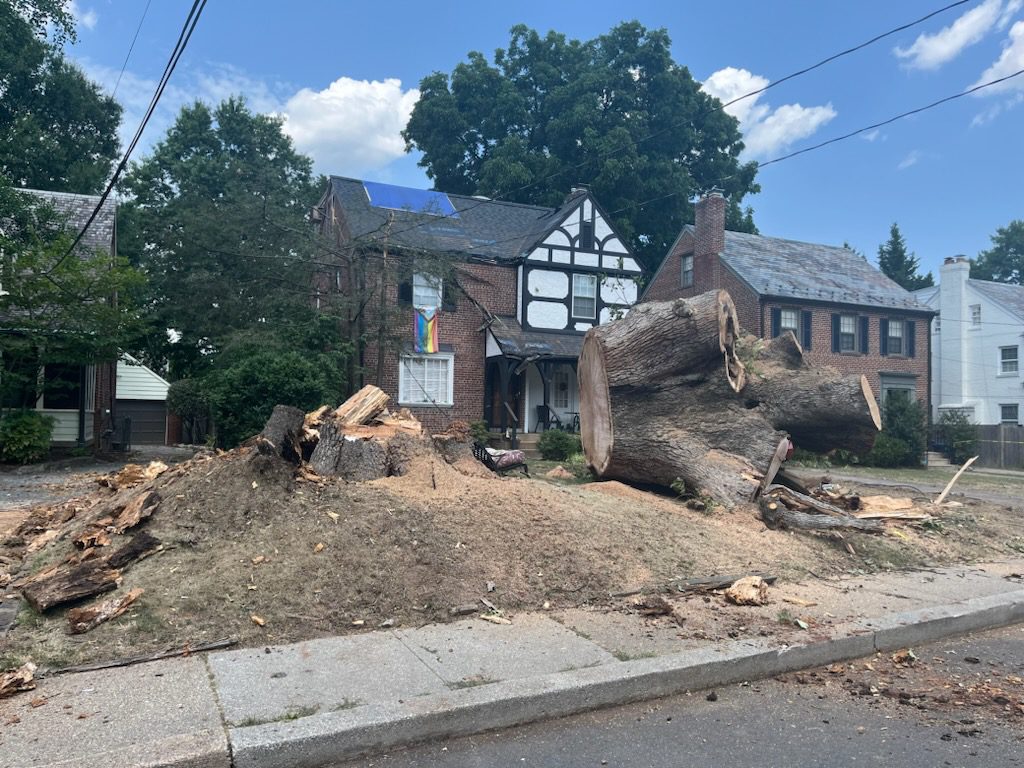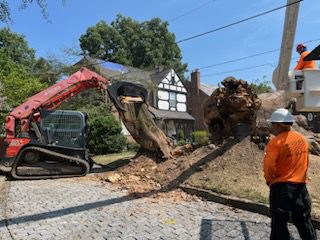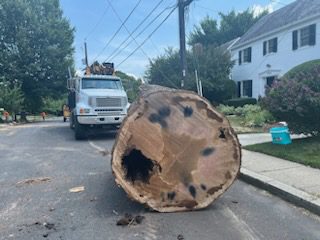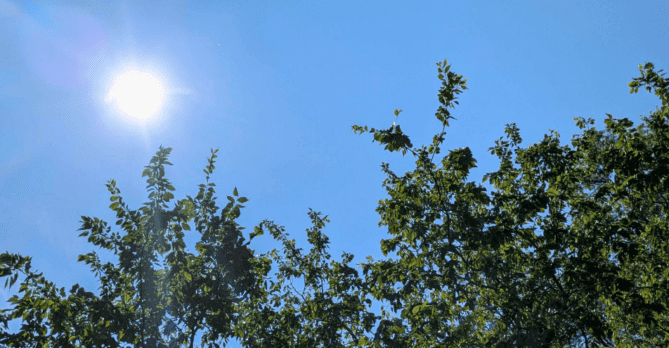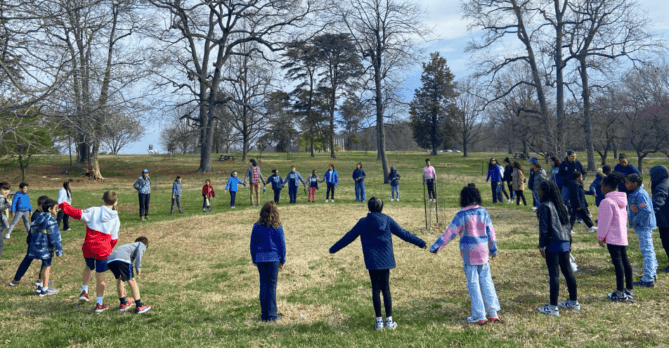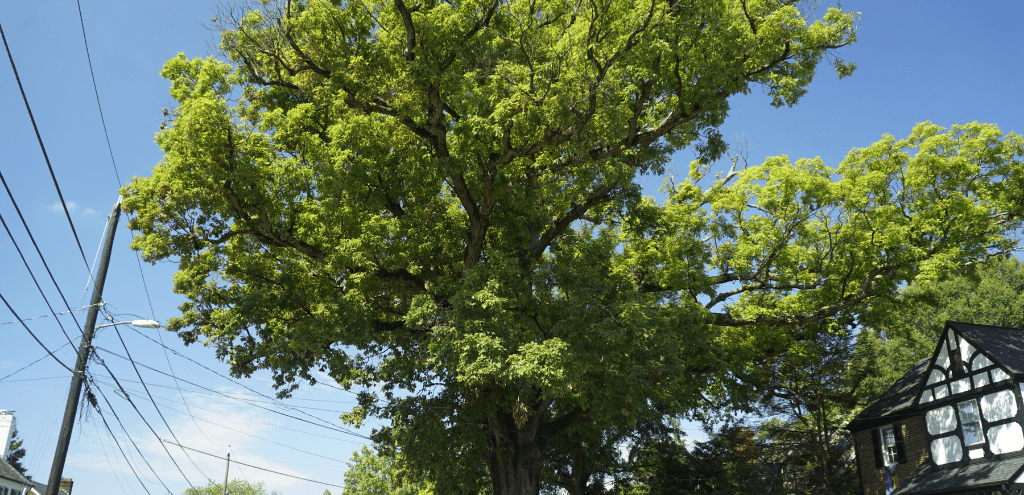
Last week, the Northampton Oak, a majestic fixture in the Chevy Chase neighborhood of Northwest Washington, DC, met its end after standing tall for decades. The White Oak (Quercus Alba) was not just any tree; it was a living piece of history, around 200 years old. The tree’s impressive age and size made it a beloved landmark, a symbol of strength and continuity in the neighborhood.
Last summer, the Northampton Oak was an honorable mention in Casey Trees’ largest tree search. With a trunk diameter of 73 inches (6 feet wide!), it was a top contender. However, the tree to take the title of “largest tree” in the District was a Chestnut Oak in Battery Kimble Park, at 92 inches in diameter.
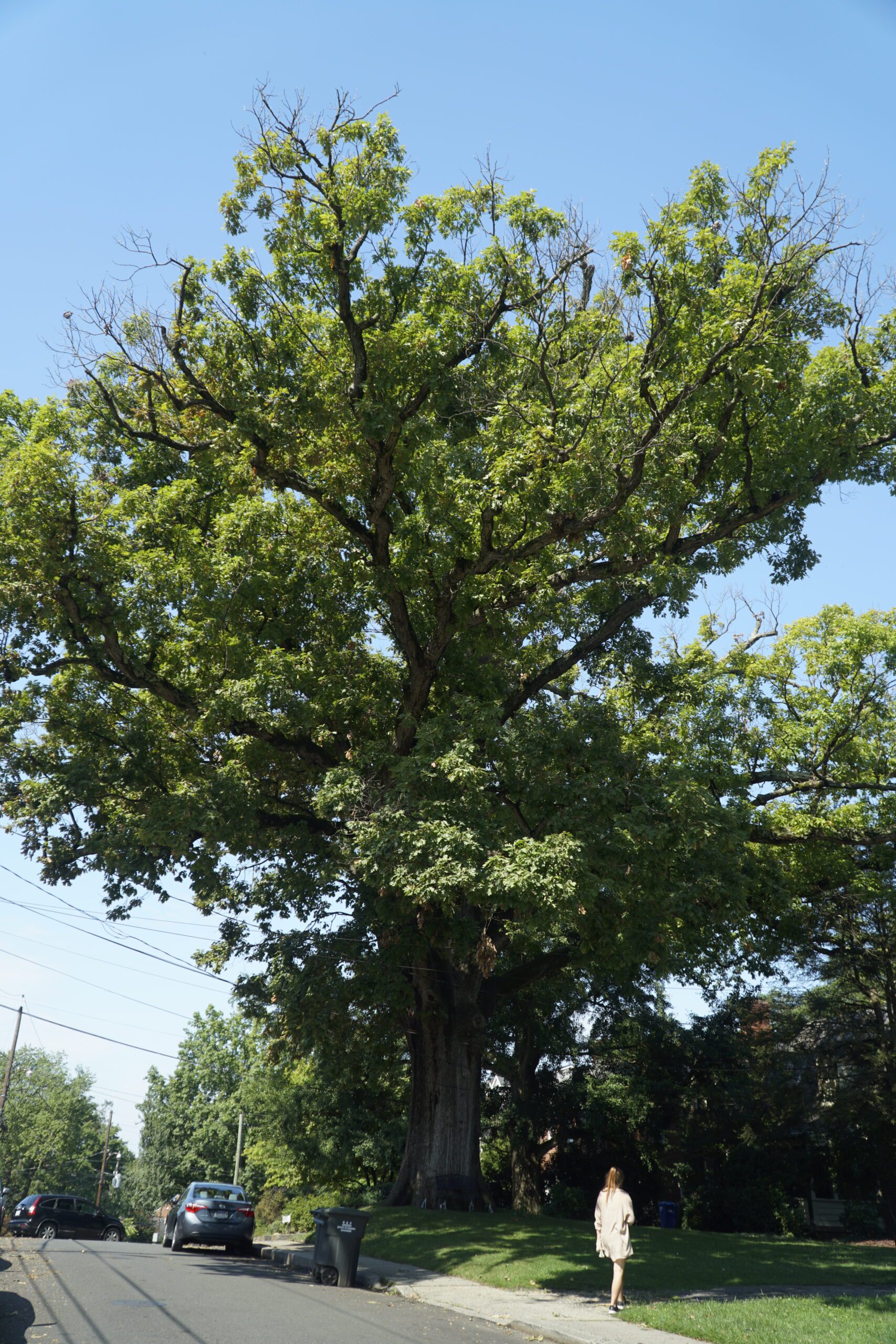
Neighbors expressed their sorrow and shared memories of the tree, which had been a significant part of their lives. Gary Thompson, a nearby resident, described the tree as “the centerpiece of our block” and reminisced about the joy and canopy it had provided for many years. Many shared fond memories of picnics beneath its shade, children climbing its massive trunk, and the sense of awe it inspired in all who beheld it. One longtime resident remarked, “It was like losing a dear old friend. That tree was here before any of us, and we thought it would outlast us all.”
This iconic tree, was previously estimated to be over 400 years old, but information collected during the tree’s removal and count of the growth rings, along with the tree’s size and estimated growth rate for a White Oak, dates the tree to approximately 200 years. Though not quite as ancient as once thought, this tree still stood to bear witness to the American Civil War and both World Wars, Dr. King’s famous ‘I Have a Dream’ speech, the moon landing, and no less than 38 U.S. presidents, going back to John Quincy Adams!
Arborists agree that the tree’s loss was likely due to a combination of factors – the natural aging process and the tree having reaching the end of its life span, or the recent drought and heat – but the loss was most attributed to butt rot, evident on one side of the tree’s roots and base. Butt rot is a fungal disease at the base (or “butt”) of the tree. This kind of rot may not always be evident to arborists until a tree fails.

Some may be disappointed to hear the tree was not actually 400 years old, which would make the tree older than the United States itself. But this may say more about the recency of U.S. history, or our own beliefs about the duration of large trees, especially in an urban environment, than it does about the age of our capitol’s oldest trees. Urban trees have many specific stresses to deal with that often restrict their lifespan, such as limited soil volume, root restriction, foot and vehicle traffic, development and construction, and more. It is quite rare for an urban tree to live as long as the Northampton Oak. With this insight, 200 years is quite an achievement!
But this is why DC protects our special trees and heritage trees, so that our largest and oldest trees have a chance to grow, making not only the maximum environmental impact for our city, but also the maximum social and community impact. Our heritage trees are places where we gather, marvel at nature’s beauty and strength, and find connections with one another through the wonder of trees.
This is why we at Casey Trees often repeat to ourselves the old adage, “we don’t plant trees for ourselves, we plant so that others may one day enjoy their shade”. This couldn’t be more truly expressed than through the Northampton Oak. This beloved tree grew up tall to impact the hearts and minds of generations. Let us too plant trees today that will capture the hearts and minds of future generations.
All DC residents can plant free trees at home, at schools, or in the community by visiting caseytrees.org/plant.
